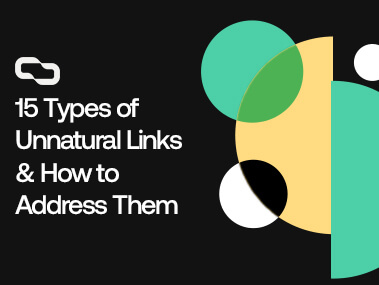Get links on brand new relevant articles for a boost of Authority and Relevance that’ll catapult your SEO. Our links include both DR and Traffic, so you don’t have to choose between one or the other.

Contents
- Key Takeaways
- What Is Link Velocity?
- Information Retrieval Based on Historical Data Patent Decoded
- Is Link Velocity Important for SEO?
- Is Link-Building Velocity a Ranking Factor?
- What Is The Optimal Link Velocity?
- How to Calculate The Optimal Link Velocity Using Ahrefs?
- Advanced Tip: How to Hack Link Velocity
- FAQs
- Conclusion
There has been a lot of debate about link velocity lately.
Some members of the SEO community argue that it’s indeed a Google ranking factor and use a Google patent to support their claim.
Others argue that this 2003 patent is super old, making it less likely to be a big part of today’s algorithm.
So, who is right?
Well, both sides have some pretty good arguments.
But these are just theories.
No one really knows the exact ranking factors Google uses.
But one thing we know for sure is that link velocity is important for SEO.
And in this article, I’ll tell you exactly why.
Key Takeaways
- Although link velocity isn’t a direct ranking factor, it can indirectly influence your rankings.
- A positive link velocity could indicate popularity and freshness — which could help you rank higher.
- A negative link velocity could signal that your content is stale or out-of-date — resulting in a drop in rankings.
- Sudden spikes in the number of backlinks could be an indication of link spam — which could result in a Google penalty.
What Is Link Velocity?
Link velocity refers to the rate at which a page or a website gains or loses backlinks over a period of time — usually a month.
The concept of link-building velocity was first discussed in 2003 after discovering the Information Retrieval Based on Historical Data patent.
Basically, this Google patent talks about how search engines use historical data to evaluate the document’s relevance, quality, credibility, and freshness.
It discusses things like the backlinks’ age distribution, link velocity trends, link freshness, link spikes & spam detection, and many more.
In the next section, I’ll get into what these terms mean and what they have to do with SEO and link velocity.
Information Retrieval Based on Historical Data Patent Decoded
1. Gradual Link Acquisition
If a page is getting more and more authority links, it could indicate that people are loving this page — which may result in higher rankings.
On the other hand, if a page is losing links, it could indicate that the content is no longer relevant.
Bottom Line: Google uses link growth trends to evaluate the helpfulness of a page.
2. Sudden Spikes in Link Acquisition
The search engine considers the rate at which backlinks to a web page appear or disappear.
A typical “legitimate” document attracts backlinks gradually, while a sudden spike in backlinks might indicate spammy, unnatural link-building efforts to manipulate search rankings or a temporary surge in popularity (like a viral news article).
Such spikes are treated with suspicion, as they may not reflect the long-term value or credibility of the document.
Bottom Line: High link growth velocity raises red flags. You need to build links gradually, not just build hundreds of inbound links overnight.
3. Old Versus New Links
The age of the links can also be significant.
A document with many old, but no recent links might be considered outdated or stale.
Conversely, a document that earns new links could be trending, relevant, or recently updated.
Bottom Line: Acquiring links, even if you’re the first organic result, will help you stay at the top of the Search Engine Results Pages (SERPs.)
Is Link Velocity Important for SEO?
Link velocity is important for SEO for many reasons.
First of all, it helps you avoid Google penalties.
You see, the art of link-building revolves around looking natural.
If I’m getting 100 links per day, there must be a damn good reason!
If Google suspects that you’re building links to manipulate the system, they’ll discount all these links — or worse — hit you with a link spam penalty.
Second, search engines use link trends to evaluate the popularity and relevance of a webpage.
And understanding that search engines favor pages with positive link velocities can give you a much-needed edge to climb the Google search results.
Here is what John Mueller says about link velocity in 2019:
As discussed earlier, a positive velocity trend indicates that the content is valuable and up to date, while a negative backlink velocity trend could mean that the content is no longer relevant.
Although the backlink growth trend might not have the highest impact on your search engine rankings, it’s extremely important — especially in competitive niches.
Why? You might ask.
Because SEO is a winner-takes-all game.
You’re not just trying to make Google like your particular page, you’re also competing against every other website in your niche.
The essence of SEO is making Google like your page more than the top-ranking sites.
Is Link-Building Velocity a Ranking Factor?
Link velocity isn’t a ranking factor. However, it indirectly influences your rankings.
It was considered a ranking factor back in the early days of Google’s PageRank algorithm when the quantity of backlinks mattered more than the quality.
Back then, the page with more links ranked higher.
And by links, I don’t mean high-quality backlinks from authoritative sites.
SEOs were using low-quality directories, blog comments, web 2.0 links, and automated link-building software to build thousands of website links per day.
However, it’s a case of correlation vs causation.
Did I rank higher because I have a higher link velocity, or it’s just because I have more editorial backlinks?
So to answer your question, no, link velocity isn’t a ranking factor.
But as discussed earlier, it can give you a slight edge over your competitors.
What Is The Optimal Link Velocity?
The optimal link velocity depends on your website size and traffic.
A website that gets 1,000 page views per month, can’t possibly get 1,000 links.
It just doesn’t look natural.
So what is a good link velocity?
Well, I recommend building no more than 2 backlinks for every 1,000 page views.
However, if you want a more accurate number, look at your competitor link velocity, using your favorite SEO tool.
How to Calculate The Optimal Link Velocity Using Ahrefs?
Navigate to Site Explorer.

Type in your competitor’s domain.

In the overview tab, click on Backlink profile.

Click on 6M to see the link velocity trend over the past 6 months.

The difference in the number of referring domains between two consecutive months is the site’s link velocity.
For example, in September, we built only 6 links (260 – 254).
In October, we lost 2 links.

And in November, we earned 19 links.

Our 3-month average is 7.6 links per month, which is quite true as we opted for the Growth Backlink Package.
Repeat the steps for 3 similar size competitors and take the average.
This will be the optimal guest post velocity in your niche.
Note: It’s important to choose competitors of a similar size to your website. I can’t look at Forbes and be like “Yeah, they get 500 links per month, I should be fine if I did that too.”

Advanced Tip: How to Hack Link Velocity
We mentioned earlier that link-building is all about looking natural in the eyes of Google.
But there is a trick that can help you increase your link velocity without risking a penalty.
And the trick is social signals.
Buying social signals can artificially inflate your website’s popularity — which justifies acquiring too many guest posts and link insertions in a short period.
However, it’s important to mention that this is an advanced technique, so you shouldn’t try it unless you really know what you’re doing.
FAQs
What Are Link Velocity Trends?
Link velocity trends refer to how many links you gain or lose in a specific period — usually a month. There are 3 types of velocity trends: Positive, Negative, and Stagnant.
Can High Link Velocity Negatively Impact SEO?
Unnaturally high link velocity, especially if the links are of low quality, can be interpreted as manipulative by search engines and may lead to penalties.
Can a Sudden Drop in Link Velocity Affect Website Rankings?
A sudden drop in link velocity can indicate to Google that a site is losing relevance or popularity, which might affect its rankings.
Is It Possible To Measure and Track Link Velocity?
Many link velocity analysis tools, such as ahrefs and semrush allow you to track the rate at which a website gains new backlinks, helping you analyze its link velocity.
How Does Link Velocity Correlate With Content Publishing Frequency?
Link velocity often correlates with content frequency.
Regularly publishing quality content can lead to a steady increase in relevant links gained, as more content gets shared and linked to.
Can Link Velocity Vary by Industry or Niche?
Link velocity can significantly vary by industry. Highly dynamic industries like technology or entertainment might naturally see higher link velocities compared to more static sectors.
How Does Link Velocity Affect Long-Term SEO Strategies?
A consistent and natural link velocity is key in a long-term SEO strategy, helping to build and maintain the site’s link profile and trustworthiness.
Are There Seasonal Variations in Link Velocity?
Link velocity might fluctuate seasonally for some businesses, with spikes during peak seasons and dips during off-seasons, reflecting the natural interest and activity in that industry.
Conclusion
Understanding link velocity in SEO is crucial for enhancing your link-building strategy, but it’s just one piece of the puzzle.
If you’re looking to harness the power of natural backlink growth, we’re here to help you.
At Get Me Links, our experience with building high-quality backlinks for over 1,200 satisfied clients speaks volumes.
Don’t let link-building mysteries hold you back.
Book a free call with us today, and let’s help you get more organic traffic together — the right way.
Find out your exact cost of ranking for your dream keyword
Find out nowLet’s get you ranking now
If you want the team at Get Me Links to help you get more traffic
Book a call NOW Back to Blog
Back to Blog 9 Minutes Read
9 Minutes Read


